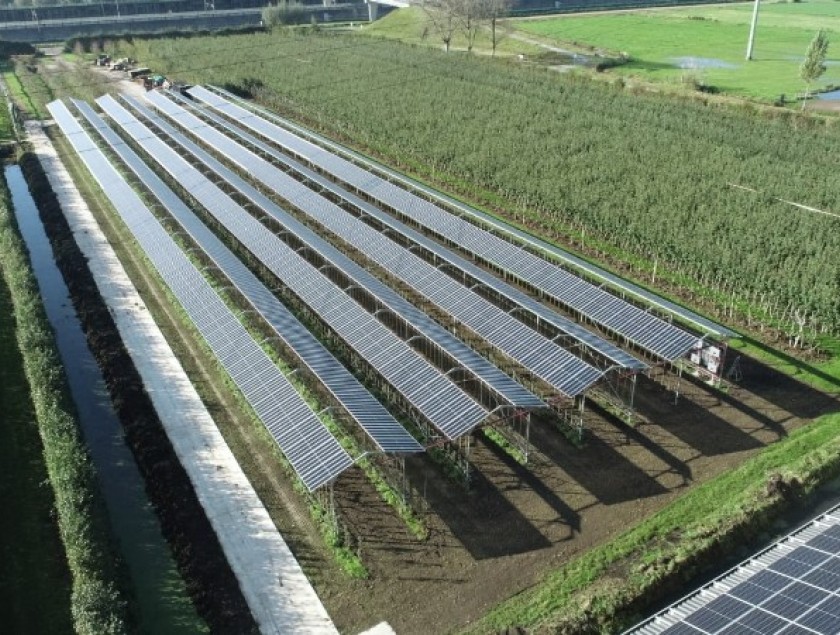Explore our FAQ section to discover insights into some common enquiries from prospective customers.

Frequently Asked Questions
What is Agrivoltaics?
The concept of agrivoltaics refers to the simultaneous use of agricultural land for the combined production of crops and solar energy. For the successful implementation of this concept in practice, a balance needs to be found between light use for energy generation and light use for photosynthesis, so as not to satisfy any of the two in favour of the other. In any case, agriculture should remain the primary activity on this land, with energy generation playing a supplementary role. This is to be achieved through the careful consideration of optimal agrivoltaic installation design.
How is an agrivoltaic installation designed?
If we talk about a greenhouse, either existing or a new build, the agrivoltaic system comes in the form of new Solar Glass for the roof, substituting the glass panels that would otherwise be used there. Brite can produce this product in a wide range of dimensions, accommodating specific project requirements in consultation with the greenhouse builder. The decision to be made by the grower is what level of light transmittance is required for the Solar Glass, so as to ensure that enough light will be reaching the crops within the greenhouse under the solar roof.
For open-air agrivoltaics systems, design is dictated by a number of factors, including the crop to be cultivated, the location and topography of the farm, the type of machinery that needs to be used there, and more. Brite can help customers design the right system for their needs. In this case also, crop type and the local climate conditions will dictate the light transmittance of the Solar Glass used, so as to keep agricultural production as the main activity on the land.
Can the crop be changed during the lifetime of an agrivoltaic installation?
A crop change during the lifetime of the system is possible as long as a new crop can adapt to the light conditions created by the agrivoltaic installation. For open-field systems it should also be found out whether the new crop’s cultivation processes, e.g. the use of specific machinery, are compatible with the design of the agrivoltaic installation.
For which crops are agrivoltaics applicable?
While there is a great number of crops for which agrivoltaic concepts have been proposed, Brite focuses primarily on crops cultivated in greenhouses and on overhead agrivoltaic installations for the open-field cultivation of fruits, vegetables, nuts, as well as for viticulture. The suitability of agrivoltaics for a specific agricultural operation depends primarily on location (amount of light availability in the region) and crop characteristics, with some species requiring more shade, others being shade-tolerant, and others still performing less well under shading. In any case, if there is no pre-existing comparable reference, it is a good idea for a farmer to first experiment with a sizable demonstration agrivoltaic system in order to determine what works best for their case before then committing to a solution to be implemented on an even greater scale.
How fast will my investment in agrivoltaics pay back for itself?
This is a question to which no single global answer is possible, given the great number of factors at play here. Think, for example, of the price one can get for the electricity generated by selling it to a utility via a long-term Power Purchase Agreement (PPA) or the operational expenses avoided if one uses the generated electricity themselves. Furthermore, the presence of an agrivoltaic system has additional agronomic benefits, including reduced risks of crop yield loss, lower irrigation needs, a water storage system, and decreased agrochemical usage, which play a role in how fast an agrivoltaic investment is paid back.
Agrivoltaic installations in North Carolina, USA, typically achieve an Internal Rate of Return (IRR) of 24.7%. This rate is influenced by various factors, such as climate conditions and whether the system is implemented in a greenhouse (where the structure would be built anyway, and the cost difference lies in the glass for the roof) or an open-field setting (where a dedicated support structure is needed). A significant financial advantage of installing solar panels is the substantial tax benefits available in many regions worldwide. For instance, in the U.S., the government offers a solar tax credit that can cover up to 30% of the installation costs. In all cases an agrivoltaics system can be financially attractive under various scenarios, and Brite can help interested parties evaluate the economic feasibility of an investment and the payback time.
What options do I have for the energy generated by the agrivoltaic system?
As with conventional photovoltaic installations, the electricity generated can be offered for sale, used by the owner of system for their own purposes, or a combination thereof. Net metering schemes and power purchase agreements are tools that may be available to agrivoltaic systems owners, depending on their location, local needs, and regulatory frameworks. When we are thinking about own consumption, this can cover the electricity needs of a greenhouse, cold storage of agricultural products, logistics operations, the further processing of products, electricity for irrigation pumps, etc. Furthermore, battery storage is bound to become more economical, the electrification of agricultural machinery is imminent, and green hydrogen will start playing a greater role in our energy system, all being factors that can create new business models for agrivoltaics.




















